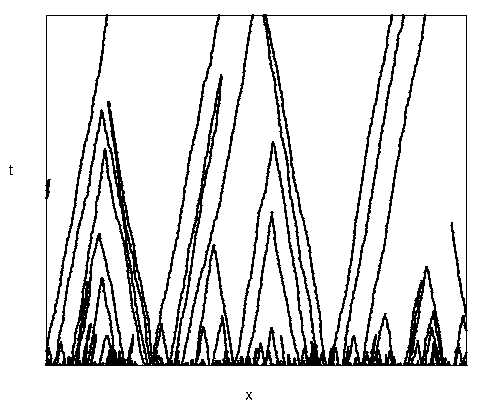
Consider the annihilation reaction A+A--->0 in one dimension when
each particle equiprobably has a velocity +V or -V, as well as a superimposed
diffusion with diffusion coefficient D. If D=0, then the particle density
decays as t-1/2. Similarly, if V=0, the particle density also
decays as t-1/2. Surprisingly, when both V and D are non zero,
the particle density decays as t-3/4!. Pictorially, this faster
decay stems from the fact that particles with the same velocity can meet and
react because of the diffusion. A space-time picture which illustrates both
the reactions among same-velocity and opposite-velocity particle is shown
below. More details can be found in Two Scales
in Asynchronous Ballistic Annihilation,
E. Ben-Naim, S. Redner, and
P. L. Krapivsky, J. Phys. A 29, L561 (1996);
(cond-mat/9604106).